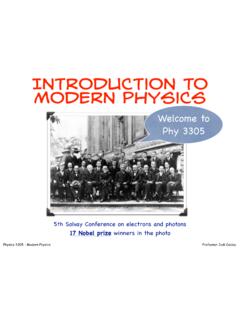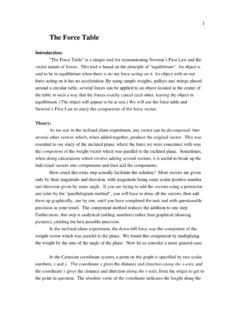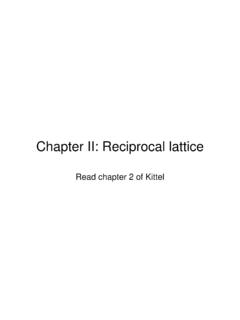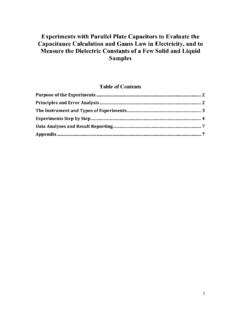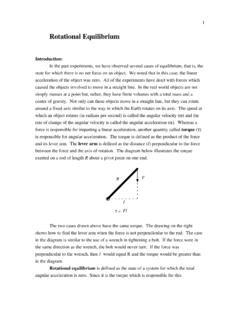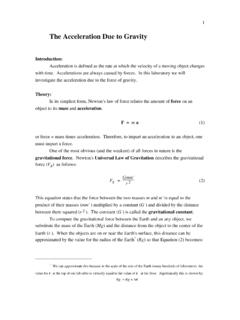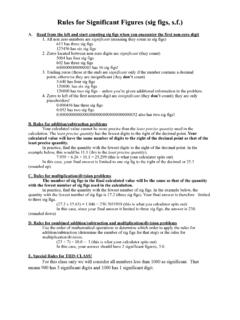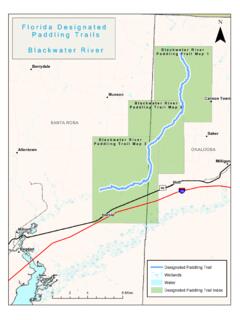Transcription of A Close Look at Therapeutic Touch - PHYSICS @ SMU
1 Current as of December 29, 2008. Online article and related content . 1998;279(13):1005-1010 ( ) JAMA Linda rosa ; Emily rosa ; Larry Sarner; et al. A Close look at Therapeutic Touch Correction Contact me if this article is corrected. Citations Contact me when this article is cited. This article has been cited 90 times. Topic collections Contact me when new articles are published in these topic Care Alerts by guest on December 29, 2008 from A Close look at Therapeutic TouchLinda rosa , BSN, RN; Emily rosa ; Larry Sarner; Stephen Barrett, MDContext. Therapeutic Touch (TT) is a widely used nursing practice rooted inmysticism but alleged to have a scientific basis.
2 Practitioners of TT claim to treatmany medical conditions by using their hands to manipulate a human energy field perceptible above the patient s To investigate whether TT practitioners can actually perceive a human energy field. Design. Twenty-one practitioners with TT experience from 1 to 27 years weretested under blinded conditions to determine whether they could correctly identifywhich of their hands was closest to the investigator s hand. Placement of the inves-tigator s hand was determined by flipping a coin. Fourteen practitioners were tested10 times each, and 7 practitioners were tested 20 times Outcome Measure. Practitioners of TT were asked to state whether theinvestigator s unseen hand hovered above their right hand or their left hand.
3 Toshow the validity of TT theory, the practitioners should have been able to locate theinvestigator s hand 100% of the time. A score of 50% would be expected throughchance Practitioners of TT identified the correct hand in only 123 (44%) of 280trials, which is Close to what would be expected for random chance. There was nosignificant correlation between the practitioner s score and length of experience(r= ). The statistical power of this experiment was sufficient to conclude that ifTT practitioners could reliably detect a human energy field, the study would havedemonstrated Twenty-one experienced TT practitioners were unable to detectthe investigator s energy field.
4 Their failure to substantiate TT s most fundamen-tal claim is unrefuted evidence that the claims of TT are groundless and that furtherprofessional use is ;279:1005-1010 Therapeutic Touch (TT) is awidely used nursing practice rooted inmysticism but alleged to have a scientificbasis. Its practitioners claim to heal orimprove many medical problems bymanual manipulation of a human energyfield (HEF) perceptible above the pa-tient s skin. They also claim to detect ill-nesses and stimulate recuperative pow-ers through their intention to heal. Thera-peutic Touch practice guides1-6describe 3basic steps, none of which actually re-quires touching the patient s body.
5 Thefirst step is centering, in which the prac-titioner focuses on his or her intent to helpthe patient. This step resembles medita-tion and is claimed to benefit the practi-tioner as well. The second step is assess-ment, in which the practitioner s hands,from a distance of 5 to 10 cm, sweep overthe patient s body from head to feet, at-tuning to the patient s condition by be-coming aware of changes in sensorycues in the hands. The third step is in-tervention, in which the practitioner shands repattern the patient s energyfield by removing congestion, replen-ishing depleted areas, and smoothing outill-flowing areas. The resultant energybalance purportedly stems disease andallows the patient s body to heal of TT state that they have seen it work.
6 8In a 1995 interview, TT sfounder said, In theory, there should beno limitation on what healing can be ac-complished. 9 Table 1 lists some claimsmade for TT in published RecognitionProponents state that more than100 000 people worldwide have beentrained in TT technique,38including atleast 43 000 health care professionals,2and that about half of those trained ac-tually practice Touch istaught in more than 100 colleges and uni-versities in 75 is said to bethe most recognized technique used bypractitioners of holistic a nursing intervention, it is usedby nurses in at least 80 hospitals in NorthAmerica,33often without the permissionor even knowledge of attending policies and proceduresbooks of some institutions recognizeTT.
7 44and it is the only treatment for the energy-field disturbance diagnosisrecognized by the North AmericanNursing Diagnosis ,one of the nursing profession s largestperiodicals, has published many articlesfavorable to professional nursing organiza-tions promote TT. In 1987, the 50 000-member Order of Nurses of Quebec en-dorsed TT as a bona fide nursing National League for Nursing, thecredentialing agency for nursing schoolsin the United States, denies having anofficial stand on TT but has promoted itthrough books and videotapes,3,53,54andthe league s executive director and a re-cent president are prominent American Nurses Associa-tion holds TT workshops at its nationalconventions.
8 Its official journal publishedthe premier articles on TT56-59as well as arecent article designated for continuingeducation association s im-mediate past president has written edi-torials defending TT against American Holistic Nursing Associa-tion offers certification in healing Touch , a TT Nurse Healers andProfessional Associates Cooperative,which was formed to promote TT, claimsabout 1200 TT HypothesisTherapeutic Touch was conceived inthe early 1970s by Dolores Krieger, PhD,RN, a faculty member at New York Uni-versity s Division of Nursing. Althoughoften presented as a scientific adapta-tion of laying-on of hands, 63-68TT is im-bued with metaphysical initially identified TT s activeagent asprana, an ayurvedic, or tradi-tional Indian, concept of life force.
9 Shestated,Health is considered a harmonious relation-ship between the individual and his total envi-ronment. There is postulated a continuing in-From the Questionable Nurse Practices Task Force,National Council Against Health Fraud Inc (Ms L. rosa ),and the National Therapeutic Touch Study Group (MrSarner), Loveland, Colo; and Quackwatch Inc, Allen-town, Pa (Dr Barrett). Ms E. rosa is a sixth-gradestudent at Loveland, E. rosa designed and conducted the tests andtabulated her findings. Mr Sarner did the statisticalanalysis. He and Ms L. rosa recruited the test subjects,performed the literature analysis, and drafted this re-port. Dr Barrett added background material and editedthe report for author: Stephen Barrett, MD, PO Box1747, Allentown, PA 18105 (e-mail: Larry Sarner, National Therapeutic TouchStudy Group, 711 W Ninth St, Loveland, CO 80537(e-mail: April 1, 1998 Vol 279, No.))
10 13A Close look at Therapeutic Touch rosa et al1005 1998 American Medical Association. All rights reserved. by guest on December 29, 2008 from teracting flow of energies from within theindividual outward, and from the environmentto the various levels of the individual. Healing,it is said, helps to restore this equilibrium inthe ill person. Disease, within this context, isconsidered an indication of a disturbance in thefree flow of the pranic further postulated that this pranic current can be controlled by thewill of the an individual who is healthy touches anill person with the intent of helping or healinghim, he acts as a transference agent for theflow of prana from himself to the ill person.
